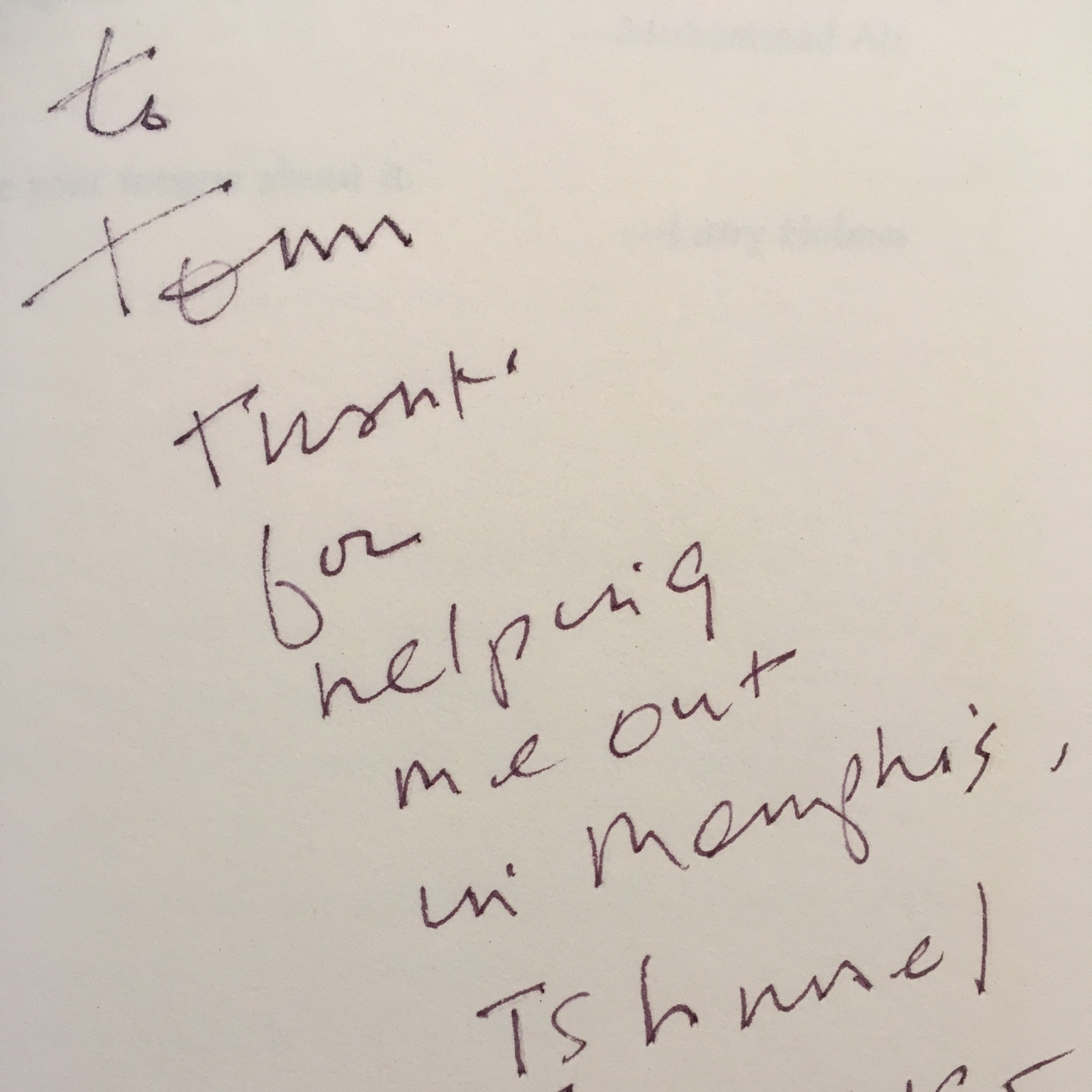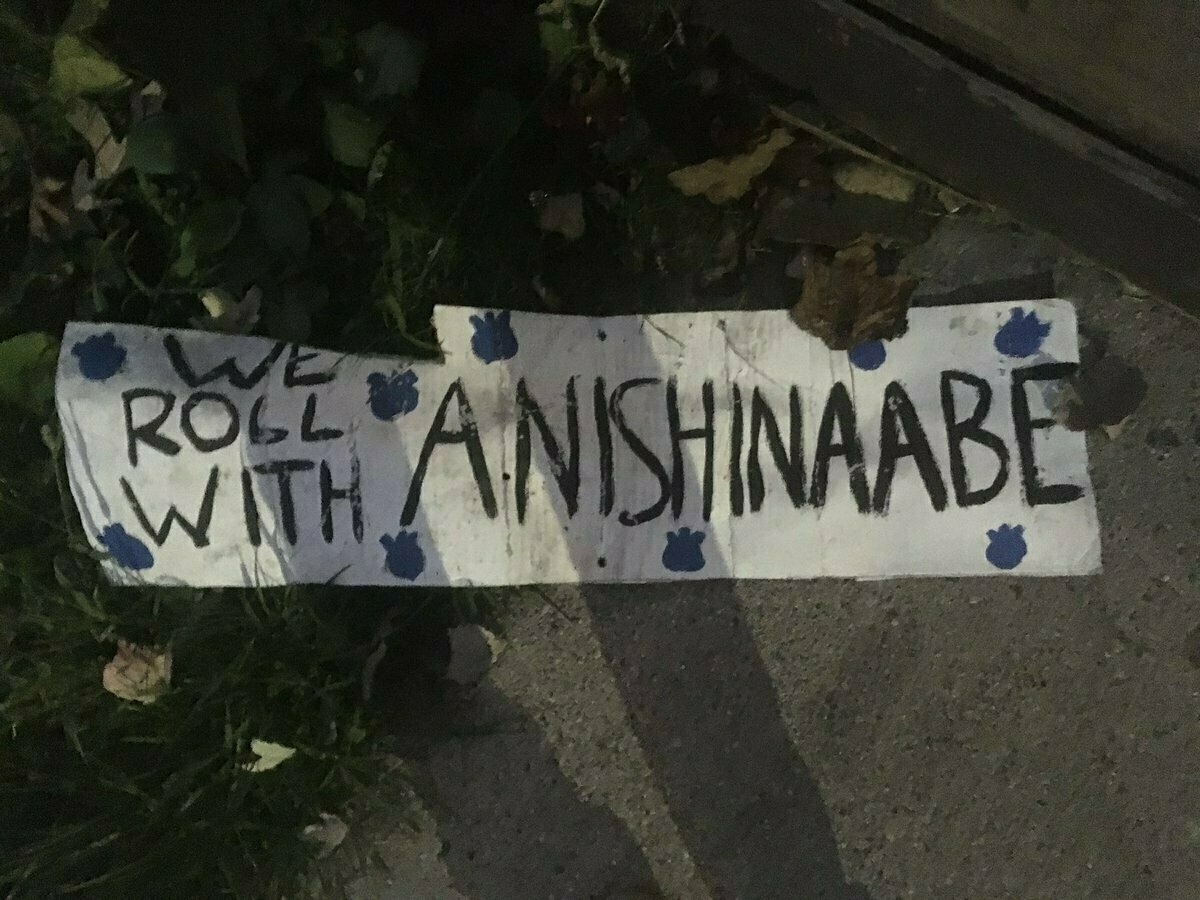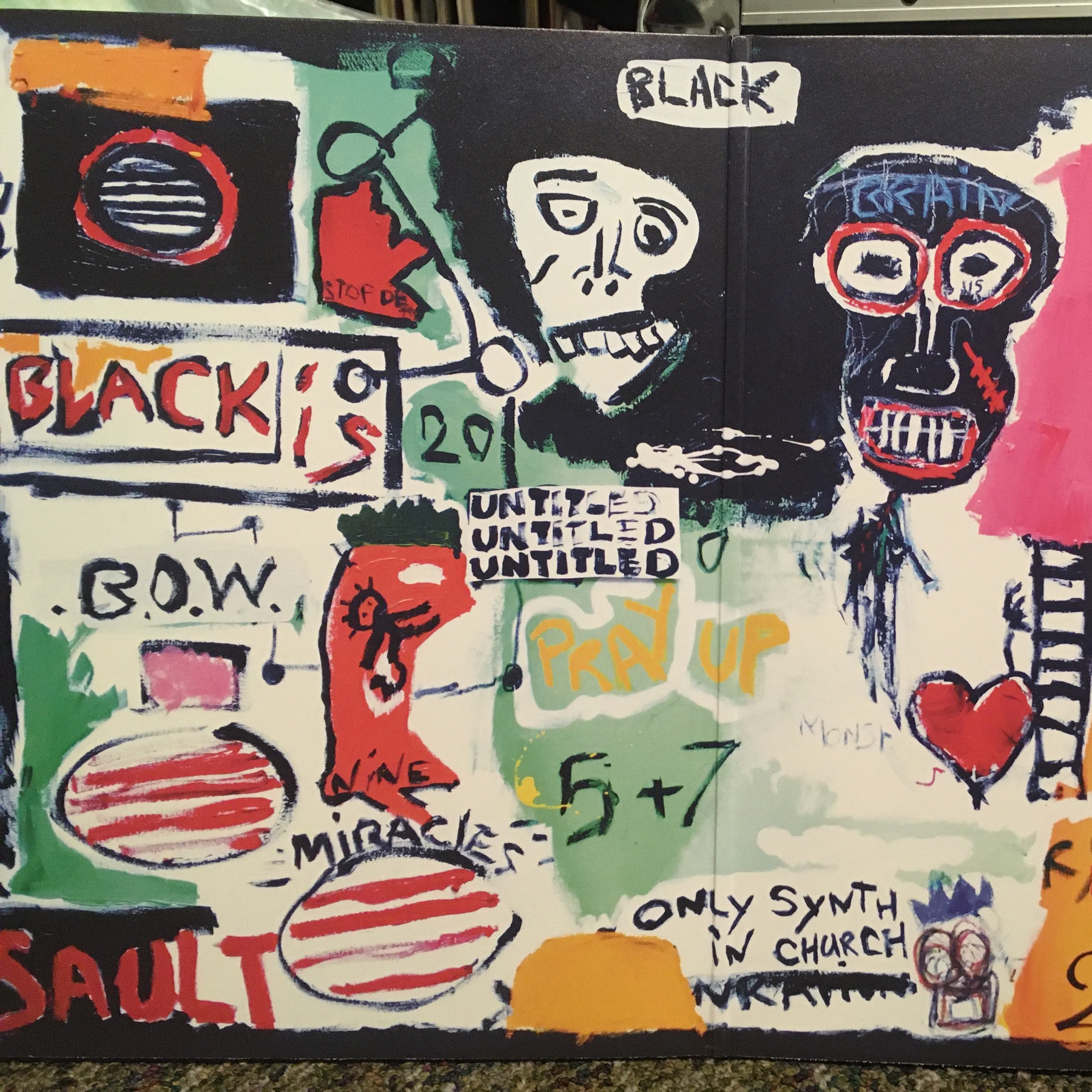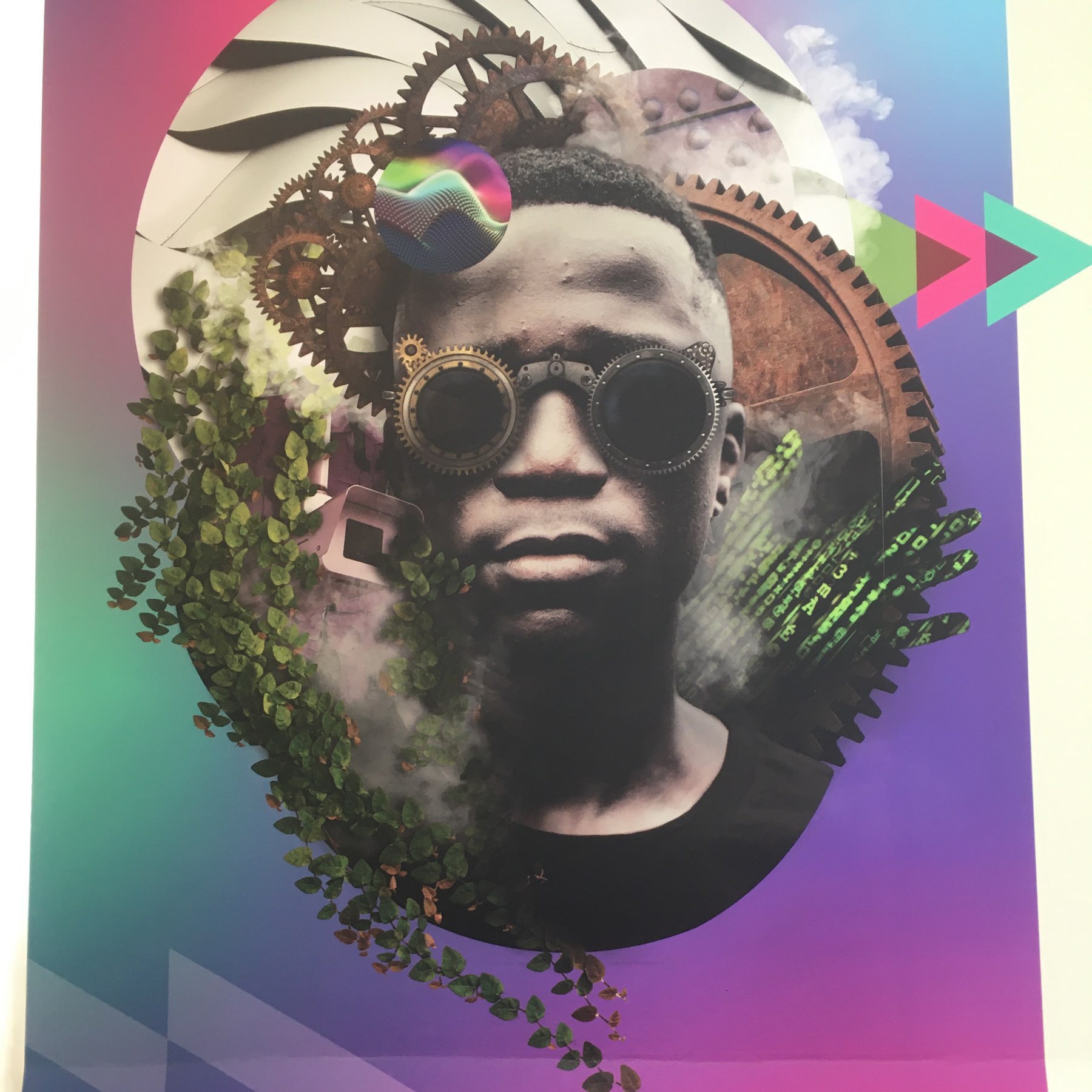Emery Marc Petchauer
People keep asking who I think should be the Secretary of Education. Truth is, I have no idea.
My only criterion is that the person must have written The Dreamkeepers: Successful Teachers of African American Children published in 1994 by Jossey-Bass.
Every now and then a little surprise comes inside a used book, like Ishmael Reed’s autograph. Hope Tom in Memphis is doing well and doesn’t mind.

Giving an invited talk next week. Putting on my smarty pants.
Listen Up! Sound-Making Publics in Urban Education
Artists and activists have important assets to enrich school and community settings, but systemic barriers often keep these assets from educators and youth. In this presentation, I focus not on the barriers but on what happens when urban educators overcome them. My particular focus is sound-making publics: hip-hop and electronic music producers, DJs, and artists/activists who apply the aural humanities in schools, libraries, rec centers, and other public spaces. I use examples from a decade of work connecting artists, educators, and youth to make beats, scratch records, and manipulate sounds. Listening in on this work, we will hear how young people’s aural imaginations guide their learning, how micro-networks of assets evolve over time, and how educators use sound as a response to injustices around them. Come with ears open and headphones on.
Lefebvre:
Don’t confuse silence with secrets. Those who speak of it less might know more about it than others.
Margaret Wheatley:
In this exquisitely connected world, it’s never a question of “critical mass.” It’s always about critical connections.
Teaching Post-Election
I asked students two weeks ago how they wanted class tonight to feel, how they might want class to go. I’m not inclined to cancel class the day after an election, no matter how bad it goes. But I feel the need to gather insights from students and consider those when planning class – especially when those students aspire to be teachers. It’s my design inclination, I think. They wanted two things, one serious and one silly: A chance to process the election together and Tik Tok videos that might cheer them up.
To process, I turned to a favorite analog tool: feeling cards. I spread these out digitally on our Mural with this prompt: “Look through all the feeling cards and pick one that describes how you are feeling about the election. Pick more than one if need. But don’t pick too many.” We then did a 10 minute solo write around this prompt: Which cards did you choose and why? I asked them to write in prose, not in bullet points or outline form. I told students they would be invited to share what they write but would not be requited.
Then we wrote. Myself included.+
I reminded students of a norm we set together at the start of the semester: Use disagreements as an opportunity to learn, respect, and educate. I told them we set the norm before we might need it. We might need it tonight; who knows. So let’s speak it in the space and hold ourselves to it, if we can.
I then invited students to share what they wrote. I was clear to say, “What you wrote is for yourself. You are invited to share, but you are not required.” For students who shared, I asked them to read exactly what they wrote rather than paraphrase it. This was to give them a useful constraint, a script — so to speak. But they were also free to finish any thoughts the time limit had cut off or to comment on what they wrote if they felt it was necessary. I did this because feeling confined to what you wrote in a timed, inauthentic writing setting can be stifling. Sometimes you write what you mean. Other times you don’t and need to explain.
I gave students three filters — sentence starters, if you will — through which to listen and respond to one another, if they wanted. I offered these to direct the conversation and anticipate different positions students might hold in class. I felt these filters might promote generative interaction and give students productive ways to respond to one another. Here they are:
“I also feel that way because…”
“I hadn’t thought about…”
“Your response challenges me to…”
Some read. Some respond. Some listened. And everything spoken is sacred to the space, so I won’t share it here.
I then moved us to think about self and community care. I did this with four areas and asked students to drop one sticky note in each.
“One thing I can do right now to take care of myself is…”
“One thing we can do right now to take care of each other is…”
“One thing I can do in the coming weeks to take care of myself is…”
“One thing we can do in the coming weeks to take care of each other is…”
I feel the individual and collective is important. I feel the immediate and long-term is important.
Before we finished, I told students I wanted to return to what we did tonight at some point and talk with them as educators about it. I want to explain the reasons behind the order of things, the phrasing of things, and the design of things. At their request, one reason we did this is so they — as aspiring educators — could see and feel one way to help students process “day after” events. From the experiential standpoint, those purposes might not be clear, so we need to return and debrief later.
+What I wrote:
I picked the word “peaceful” because, to my credit, I feel like the boundaries I set for myself in the last 24 hours have been right on. I haven’t been glued to media, watching every single uptick in percentage points. I haven’t been doing electoral math in my head. And I haven’t let countless tweets or posts get their hooks in me. I’ve jumped over to a news site only a few times to get an update and jumped out before it could pull me in. I’m proud of this clarity and the boundary I set. I haven’t always known how to do that.
I also picked the word “tense” because I think it describes the relational state of some people in my family who have different social convictions and beliefs. I imagine us in this distant orbit with gravities pulling upon one another from afar as all these votes are counted, and I wonder what will happen to the orbits when it’s all finalized, whenever that may be. Orbits are pretty predictable unless space objects like meteors or NASA junk get in the way. [Metaphor incomplete.]
Monday’s newsletter: Some notes from a 2-square mile Detroit-enclosed city named Hamtramck. Issue #36 of Elements & Embodiment.
Me (Aug 2020): No late work will be accepted.
Me (Sept till infinity): Hey turn it in whenever you can. Whatever works for you. No worries. It’s all good. Glad you’re here. Hope you’re okay. Let me know if you need any help.
Just voted. ACT, SAT, GRE, PRAXIS - never in my life have I filled in a singular bubble so crisp, cautious, and complete as I did just now.
For the last year I’ve been writing a weekly newsletter that goes out by email. Yes, email. Here’s why and what I’ve learned.
I started writing Elements & Embodiment after reading a cluster of books that started unbreaking my brain from the damage done to it by digital platforms. The books were Digital Minimalism, Work Clean, Deep Work, The Shallows, and some others. The platforms are the big ones, the usual suspects. I did the digital detox outlined by Cal Newport in DM and learned there are two worthwhile, practical reasons for me to be on those platforms: 1. To know when and where my local friends are having music/culture/community events. 2. To learn of articles friends and colleagues are reading. Anything else is outside my values, health, and capacity. I know I sound like a Luddite.
A fix for the first point is easy: I now jump onto The Platform that May Decide The Election once a week and do one set of actions: I click on events, see where my friends are DJing or going to events that look fun, log those into my personal calendar, and them I’m out. No posting, no liking, and very little scrolling.
To fix the second point, I started using a RSS feed to bring relevant articles to me outside of these platforms. I should have done this a long time ago. What comes to me is actually better than what I could get via friends online. I now get posts from design blogs, music sites, The Anarchist Library, the usuals like The New Yorker, and I don’t get that same Education Week article across my feed 10 times in three days.
To keep track of this content, I started using a Pinboard to bookmark sites and articles that come my way through email, imbedded links, and really anywhere. The platform isn’t flashy (it’s been called “social bookmarking for introverts”), and it doesn’t need to be. I no longer have browser tabs open to articles and readings that I hope to come back to at a later point but usually don’t. They’re all in one place now. I occasionally schedule some time during the month to dig through what I’ve bookmarked. I often find things I didn’t know I had bookmarked. Or I’ll click on a tag I’ve generated – like “Dilla” – and see that all those would-be-open browser tabs have amounted to an interesting micro-archive on a topic. Pinboard sometimes feels like my record collection: I’ll go digging through it and find good stuff I somehow forgot I had.
So what do these other tools have to do with the newsletter? A good amount. But one other point first. I started writing and sending out the newsletter before telling anybody about it. That means it was going out to nobody. It felt right, trying this thing out and perhaps finding some kind of groove before letting others into it. I started sharing it on other platforms at issue #6 and letting people know they could sign up to receive it.
These other changes meant that over the past year, my primary way of communicating with folks “out there” was the newsletter. No Facebook posts; not a lot of tweets.
What I didn’t expect was how special this would feel – writing to a small group of people who signed up to read outside of the digital gaze. This felt different from people who read tweets or Facebook posts. In those places, it seems – at least to me – that we’ve fallen into a kind of entanglement with one another by the algorithm coaxing us into hitting the friend or follow button. Typing your email address into the newsletter “sign up” field isn’t a heavy lift, but there’s more intention behind it and more of a willed decision compared to those other places. I know people want to be there and – just as important – can not be there if they no longer wish.
Knowing that a specific group of people might be expecting something from me in their inbox each Monday felt like a healthy push forward to write and finish an issue each week. What this push often did was send me digging through my Pinboard, reading articles I had bookmarked on the fly but not yet taken the time to read, and picking out connections among them to share. Maybe it was something on John Brown. Maybe it was a profile of T La Rock. Maybe it was a story about the ghostly radio broadcast outside Moscow that nobody claims to run. What’s in my Pinboard has reminded me how much I like to read permiscuously, far outside of any degree I have or subject I teach.
Digging into the archive often sent me searching for more on a topic to fill out a newsletter. So I’d plan to share some of Lorna Simpson’s collages because my RSS feed pulled an article from The Paris Review about her. But then I get to searching around and find another piece on her upcoming show in Hong Kong, and I’d be learning more about an artist or topic than I had when I started. In not too much time, an issue would be coming together, like #29. Sometimes an issue was on one topic, like OG Village Voice articles or John Brown abolition art. Other times – most times, actually – an issue was an assortment of treats, like issue #20: Myths & Proper Covers.. The tagline of the newsletter is rather accurate: my weekly path through art, education, culture, and more.
I’ve been slipping into the past tense above because after one year in, I think the newsletter may have run its course with respect to what it has done for me. Or maybe it’s this season we are all trying to survive, literally and morbidly. The way to find out for sure is to take a step back and see how it feels. 📝
This week’s Elements & Embodiment newsletter has a handfull of treats related to a man who created “a third way of relating to musical time,” J Dilla. 🎶📝
I tried something new: I did the introduction to the Sound Studies, Writing, and Rhetoric keynote panel as a DJ/turntablism set while theorizing over top. Why not push the boundaires with conferences going virtual.
Sharing some art from Alex Dodge & early writings on hip-hop DJing from music journalist Robert Ford, Jr. in this week’s newsletter. I do have fun sharing in this format the things I come upon.
I hate writing bios, so I end up rewriting myself every time I’m faced with the task:
Emery Petchauer is an associate professor in the Department of English and the Department of Teacher Education at Michigan State University, but he feels most at home organizing DJs and music producers to put on workshops for young people, and that’s because he’s been a DJ for much longer than he’s been a professor.
Albert Parsons, writing in The Alarm (1884):
One man has no right to live on the profits of another man’s labor, under any excuse whatever. He who stands on what another man produces, stands on that man. No matter what the pretext, he is standing on him wrongfully. The under man should knock off the burden and not be longer bamboo-zled with the idea that he should be patient, for perhaps by and by he may be on top. Down with such nonsense!
On posting (scholarly) things with which we disagre:
Whilst sparking outrage might be one way to lift an altmetric, the professional encouragement of academics to use social media can also be a serious occupational mental and physical health hazard….We need to begin conversations about the responsibility an academic has in critically, ethically, and safely distributing work, not just critically engaging with it.
Dr. Naomi Barnes writing in LSE Impact Blog
Teaching Through Non-Indictment
The non-indictment of Breonna Taylor’s killers came out a few hours before my evening class was to start. (Note: Brett Hankison was indicted for wanton endangerment unrelated to her death.) This isn’t the first time I’ve taught through a moment of racial violence. I know it won’t be the last. The impulse to address the moment is important, and there usually aren’t easy steps. So I’m sharing mine. Here’s are the pivots I made tonight. As always, I’m open to feedback, for I know I don’t have it all right.
I started class by acknowledged the moment we are in and the most urgent facts that students might or might not know. Breonna Taylor was killed 6 months ago in a botched police raid. Just announced in Louisville, no officers would be indicted for her murder. The “wanton endangerment” indictment is unrelated to murder. I emphasized that, for those of us following this story, we carry this stress and trauma in our bodies to class tonight. The ways we live through this stress depends on our own racial proximity to and experience of racial violence. It’s typically less if you are white. It’s more if you’re Black.
I also called the name of Aiyana Stanley-Jones, who was killed in a botched police raid in 2010 on the eastside of Detroit — for which there was no kind of justice. I said her name and explained this event so students would know that this particular kind of anti-Black, state-sanctioned violence (the botched raid) is a pattern — even here in Michigan. I told students how even today, organizers in Detroit say her name, paint her in murals, and carry her tiny legacy forward. She is known and remembered. Students needed to know this.
I told white students that no matter how badly they felt, their feelings would subside before folks of color. I told them that this applies to me as well since I am white. I told them they should think about their actions and the grace they should give the folks of color around them. I wish I would have given them specific examples of such actions I’ve taken and should have taken in the past. I told them that it’s not just their peers. It’s their professors too — especially Black women professors they may have. They are reliving trauma and fears. I told students they needed to know this.
I told students that the constant news cycle can be overwhelming and unhealthy. It can make the entire problem seem beyond their control. I suggested they think about what is in their locus of control. And one thing that is (aside from voting!) is recommitting yourself to studying to understand the roots and shapeshifting nature of white supremacy and racial violence. I said it’s not enough to know that something is wrong. You need to know how and why. You know when you’re sick. You to go the doctor to understand why so it can be fixed. Understand the nature of the problem so you can be of service where you are. I had planned to tell them to read Kimberlé Crenshaw’s original article on intersectionality. (Dig into the classics!) To read Angela Y. Davis’s book Are Prisons Obsolete? if they were just now hearing about this idea of abolition. To read Brittney Cooper’s Eloquent Rage. I wanted to give them specific things to read even though it’s outside of the course focus. I didn’t though. I don’t know why. So I need to follow up. It’s not enough to tell them to study without giving specific steps.
I told them that I fear it may be superficial, but as the organizer and leader of the class, I’m making the decision that the time we spend together in class tonight will be to honor the life of Breonna Taylor. What I didn’t tell them is that this idea comes from the Eucharist — that in some Anglican parishes, the rector may dedicate the Eucharist to someone who died recently. This is where the idea came from and why – at least in my private thoughts – it’s not an empty gesture. I told them the time we spend together and the focus you offer toward your education in this class period will be to honor her life. I told them people miss her profoundly right now. They miss what she sounded like. They miss what her neck smelled like because they hugged her in the kind of way that your face is in the other person’s neck. They miss all these things about her. We don’t and we can’t. But we’ll speak her name and offer our time to her life – as superficial as it may sound.
I then gave students a 5 minute break. Because somebody has to set up the zoom breakout rooms.
Out this week: Issue #32 of my newsletter covers sound art from Detroit, collages from Krista Franklin, and more.
Roger Bonair-Agard on the break:
To consider the breadth and depth of what the break beat means, and how it can be deconstructed, is to understand first of all what it means to build and compose a music from such corridors of already existing music; what it means to build a completely new sound, a new series of tunnels down the cave to the place where bass lives. To consider the break beat, therefore, is a kind of hajj, a journey that must not be lightly taken. Where the break leads is a treacherous place and desperation has sent its composer there. What she uncovered is sacred for what she has had to endure to get there. What you are witnessing is a religion that might change you forever. Indeed it must.
I read with great interest the writing on white American evangelicals and their relationship with Donald Trump. Monday’s newsletter sent out to the inner circle contains highlights of this work.
Police in Schools: My Rejoinder
Last month a group of school leaders asked us what we thought about police in their schools. We only had a few minutes left in our 3-hour session. I wasn’t satisfied with my response. Here is what I should have said and will next time:
The what is simple: get police out of your school; use those resources to fund counselors, community mentors, and restorative justice. The how is bit more complicated, but that’s only because there are so many ways to do actually do it, and you have to come to consensus on one approach. And you’ve already answered the why — that you should get police out of your school because their presence undermines the very function of your schools for the students you are consistently already underserving.
Your concern is probably about something else: white parents. You’ll have to muster the courage to withstand the rage white parents will deploy when you take this deliberate stance toward protecting the spirits of Black children in schools. It’s not because white people hate Black children. It’s because white people love police. We’ve imagined them as our protectors since childhood, intervening between us and the dark bodied threads we invent, imagine, or hear about — usually from other white people. As adults, we believe police will do the same for our white children when they are in close proximity with dark children in schools. Those of us who no longer love the police didn’t get to this stance on our own. We got here most likely by seeing the terror police have inflicted on specific Black people we know by name, touch, and voice who we also — by some circumstances — came to love. If we hadn’t come to love these Black people, we would still love the police.
Someone I don’t know very well but nonetheless respect once said to a big room of people, “Leadership means disappointing white people.” I don’t know if it matters in this instance — but I’ll say it because you’re probably wondering — but she is white, just like most of you. So I wonder how you might become free to do what you know in your belly is right if you accept that you absolutely will provoke and under all circumstances must withstand the rage of white parents in order to do your job.
Did you see the miniature record store for mice that popped up in Sweden? This and other small treats in issue #31 of my newsletter, Elements & Embodiment.


